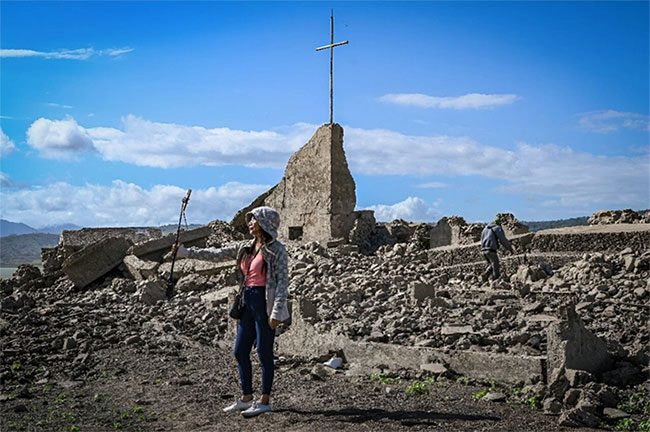A 300-Year-Old Monument Surfaces Unexpectedly Amidst a Dam in the Philippines After Months of Severe Drought.
The site is located in the town of Pantabangan, Nueva Ecija province, in northern Philippines. It was once a residential area but was submerged after the government constructed a dam in the 1970s.

Part of the monument from the Pantabangan dam in Nueva Ecija, Philippines, has emerged after months of “almost no rain” – (Photo: AFP/Jam Sta Rosa).
In recent months, severe drought in the region has significantly reduced the water level in the dam’s reservoir, revealing the historic site. According to data from the national weather agency, the water level has dropped nearly 50 meters from the normal level recorded at 221 meters.
This event has attracted the interest and curiosity of many tourists, both local and international, despite the extreme hot weather conditions. Adventurous explorers can pay approximately 300 pesos (5 USD) to local fishermen for a boat ride out into the lake for a closer look.
Typically, March, April, and May are the hottest and driest months in the Philippines. However, this year’s weather conditions have been exacerbated by the El Niño phenomenon. About half of the provinces in this Southeast Asian nation, including Nueva Ecija, have fallen into a state of drought.
This weather condition is also causing difficulties for agricultural activities and hydropower production. Two hydropower plants near the Pantabangan dam have had to suspend operations since the beginning of April, about a month earlier than during previous drought seasons.
Many farmers growing rice in the area have also had to shift to planting vegetables and flowers that require less water.




















































